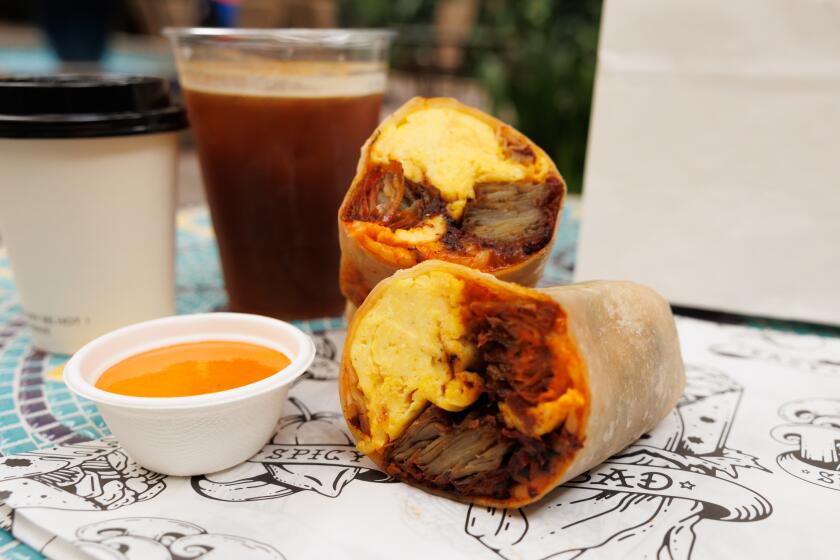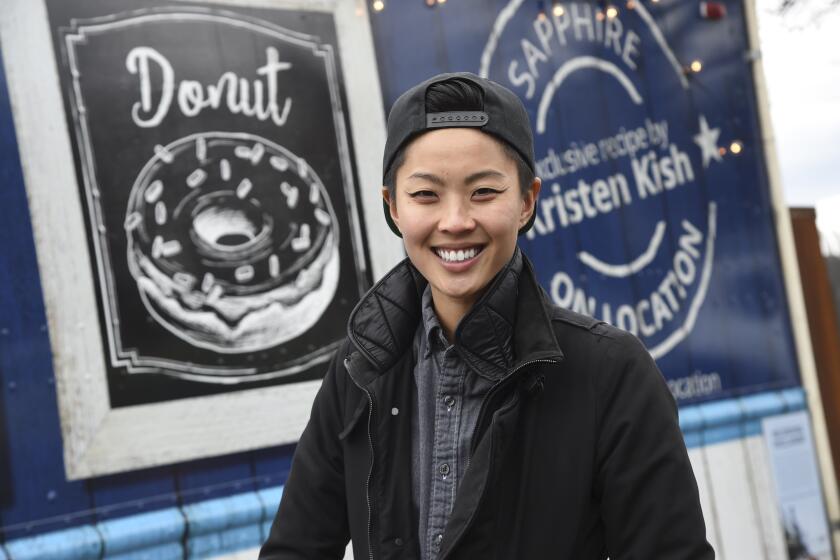The Perfectly Scrambled Egg
- Share via
A perfectly scrambled fresh egg is an incredible experience. The egg should be at least one day old, as it will coagulate better than a just-laid one. And the chicken that is allowed to fend for itself rather than being cooped up and fed standard feed will probably have a brighter yellow yolk and infinitely better flavor.
Scrambled eggs should be timed just right. A heavy saucepan or double boiler is preferable to a skillet, because a skillet has too broad a surface area, which can lead to overcooking the eggs and making them tough and dry.
A scrambled egg should be light and tender, the opposite of an omelet. The stirring depends on personal preference. I prefer large egg curds, but others like smaller pieces, delicately joined together.
The bread should go in the oven just before the cracking of the eggs. Preferably it should be toasted on one side, spread with butter and then toasted on the other side, the butter sinking softly into the bread. The toasted bread should be cut into two or four triangles.
SCRAMBLED EGGS
6 to 7 eggs
3 tablespoons butter
1/2 cup whipping cream
Salt
Freshly ground pepper
Crack 6 eggs into bowl and whisk slightly to combine. Heat butter in saucepan over low heat until foamy. Pour in eggs and keep pan over low heat until eggs begin to coagulate. Stir with wooden spoon. Let eggs stand on low heat again; good scrambled eggs take up to 15 minutes to prepare.
After repeating this process several times, add cream, letting it sink in and meld with eggs. If eggs are overcooked, stir in remaining egg, letting it soften any hardened eggs. Season to taste with salt and pepper. Continue to cook over low heat until cream is heated through, 2 to 3 minutes. Serve promptly. Makes 3 to 4 servings.
More to Read
Eat your way across L.A.
Get our weekly Tasting Notes newsletter for reviews, news and more.
You may occasionally receive promotional content from the Los Angeles Times.









